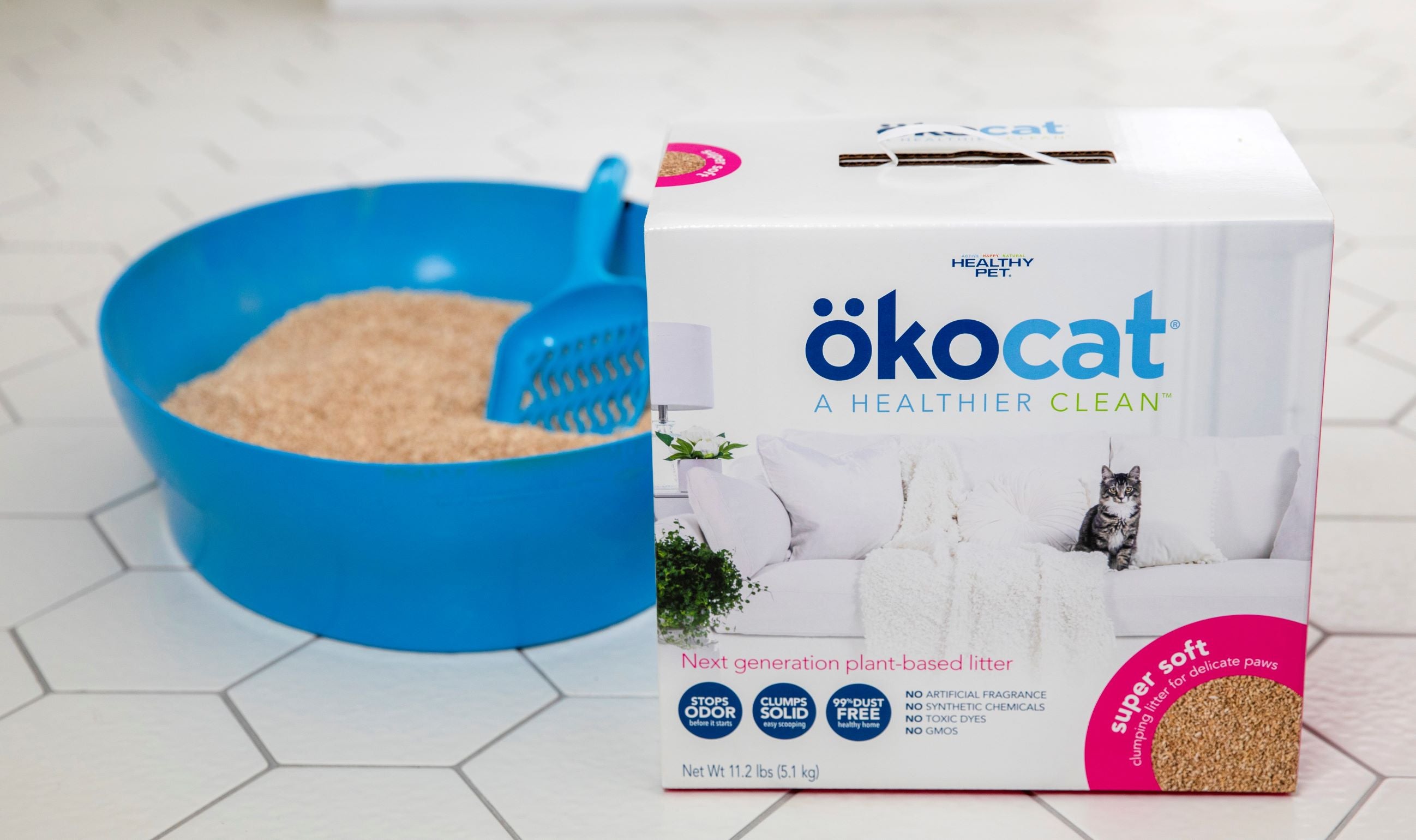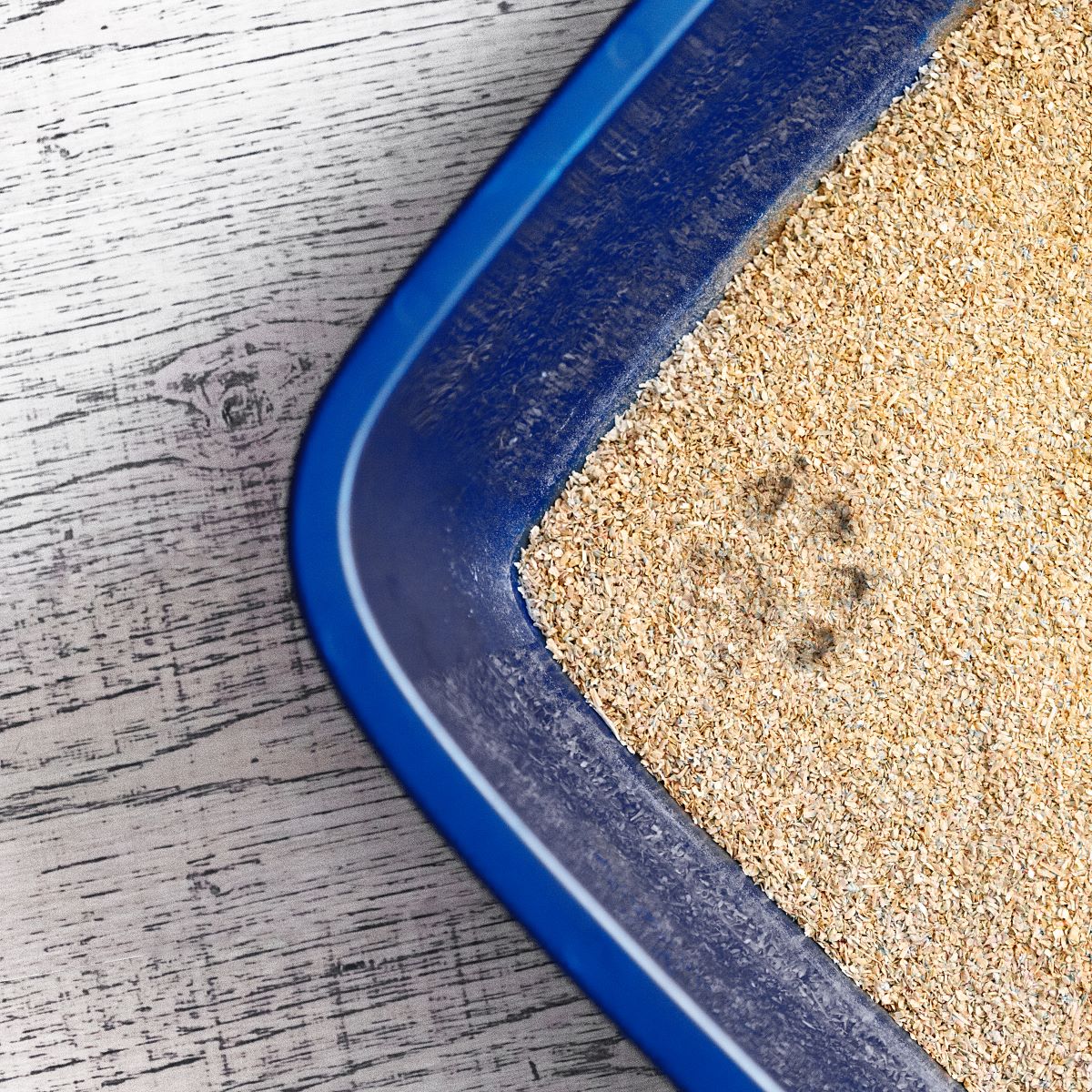
Not So Secret Tips on How to Make Your Kitten Love Their Litter Box
Did you know that litterbox problems are one of the main reasons cats are surrendered to shelters? And while in some cases inappropriate elimination has medical or stress-related causes, a lot of times an appropriate set-up can make your kitty love their litterbox instead of avoiding it.
While your individual kitty’s preference may vary, here are some guidelines:

Not all litterboxes are created equal
When it comes to a litterbox selection, simple is better. An uncovered tray that is easy to get in and out is the way to go – avoid top entry boxes, boxes with sides so high a kitty needs to jump in, flaps and covers. After all, you wouldn’t want to have to go through obstacle course to get to the toilet, would you?
Jo’s tip: If you have issues with litter tracking, place your box inside another, much larger one. Mess contained! Using a low-tracking litter, like Okocat Less Mess also helps!
Size does matter
Your kitty’s box should be 50% longer than their body (measured head to bum, excluding the tail) and twice as wide as their body shoulder to shoulder to make it comfortable for them to turn around.
Jo’s tip: If you can’t find an appropriate size litterbox, get a large storage box instead and cut out an entry in one of the sides (remember, easy to get in and out!). Just be careful not to injure yourself!
Multiply!
Cats are like chips and it’s hard to have just one. If you live with multiple felines, you will need multiple litter boxes. The general rule is number of litter boxes = number of cats + 1. Place your boxes in various locations – two boxes side by side look just like one big one to a cat.
Jo’s tip: If you just added a new member to your household and one of the cats suddenly starts eliminating outside the box, it can be a good indication that love is not necessarily in the air. Contact a cat behavior consultant or a veterinary behaviorist for help in integrating the kitties.
Location, location, location

Everyone likes privacy and a bit of quiet and peace when they’re using the bathroom and cats are not an exception. Place your litterbox in a spot that feels safe to your kitty. Avoid proximity of loud appliances, like washing machines or dryers that can start making noises unexpectedly and scare the cat. If you have a dog or a toddler, consider a location that is inaccessible to them. A baby gate with a pet door or a strap holding the door just ajar are just a couple of ideas how to limit their access.
Jo’s tip: Make sure you have at least one box on every floor of your house, so your cat doesn’t have to run far to go to the toilet. This is especially important if they’re older or sick.
What’s the scoop on litters?
Clumping or not clumping? This can depend on your and your cat’s individual preference, just remember that the methods of scooping each type is different. When choosing your litter also consider how much dust it generates – clay and silica litters can be very dusty and even have impact on your cat’s health. Think like a cat – what would you like to be standing on? Soft, smaller particles, like ökocat Super Soft or ökocat Featherweight, feel better on cat’s paws. This is especially important if your kitty has sensitive paws (like all declawed cats do), is older or just a kitten. The other sense to remember is smell. Scented litters were created for humans to mask the smell, but they can be very aversive to cats, whose sense of smell is much better than ours. The better way to keep the litterbox from being smelly is to keep it clean.
Jo’s tip: If you want to change the type of litter you’re using, make sure to make it gradual. Start by replacing ¼ of your litter with the new type, then make it ½ and ¾ at the subsequent full clean-ups before you go fully in with the new stuff.
Cleaner is better
My basic guideline when someone asks me how often they should clean the litterbox is scooping twice a day (I like to do it first thing in the morning and last thing in the evening), full litter change and clean up once a week and a new box once a year. This may be more often if your kitty is not feeling well or has a medical condition, and the box gets dirty faster than that. Avoid using any harsh cleaners, their smell may be too aversive for your cat. Hot water and soap are usually all that’s needed.
Jo’s tip: Place a small trash bin with a tight lid or a Cat Genie bin next to a litterbox – it will make scooping the litter faster, easier, and less of a chore (win for you) and you will end up doing it more often (win for your kitty!).
VERY IMPORTANT
If you did your best to set up their bathroom the right way but your kitty is eliminating outside of the litterbox, do not punish them – take it as a sign that something is not right. Make an appointment with your veterinarian as soon as you can to eliminate any possible underlying medical causes. Your kitty should get a full medical check-up, including urinalysis, blood work and anything else your veterinarian deems necessary. If your cat receives a clean bill of health but still dislikes their box, reach out for help to a Certified Cat Behavior Consultant (CCBC), who can identify the triggers and make a behavior modification plan tailored to you and your kitty. To find a CCBC, check this online directory: https://m.iaabc.org/consultant/

Guest Post by Joanna Wachowiak-Finlaison, CCBC, CPDT-KA, a certified dog trainer and cat behavior consultant currently living in Houston, Texas. When she’s not helping pet owners from all over the country to rehabilitate their reactive dogs or solve litterbox problem cases, she has fun training her 17-year old kitten, Kicia, her Malaysian-born dog, Fuji, and her little flock of chickens.
info@highfiveanimaltraining.com,
www.highfiveanimaltraining.com









 email us
email us